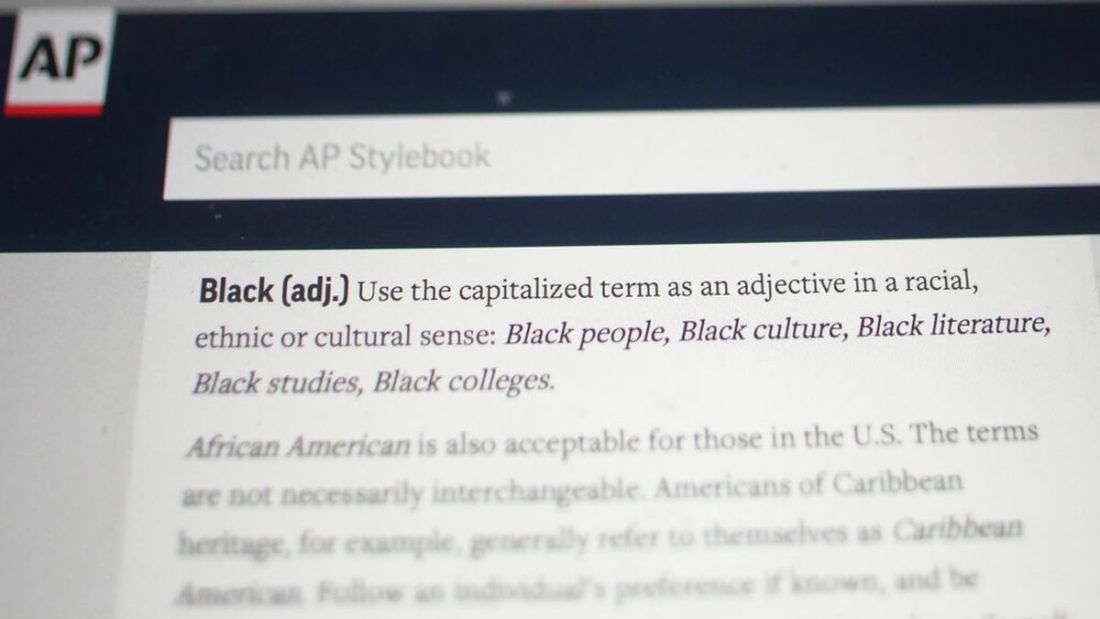A lot has changed in 2020, including the way we talk and write. This year, more than ever, style guide authorities like the Associated Press (AP) are addressing some hard-hitting subjects like race, gender, religion, age, police activity, sexual conduct, and more.
Not long ago, we grammar geeks were up in arms about the AP Stylebook allowing “more than” and “over” to be interchangeable. “More than my dead body!” University of Connecticut Economics Assistant Professor Mike Shor famously tweeted. How could anything be more controversial, we asked?
Enter 2020.
If brands haven’t updated their style guides in a while, it’s time to determine if it’s worth an edit. Many of these new rules reflect substantial paradigm shifts. Ignoring them could impact the intent of your copy in surprisingly negative ways (read: your brand may appear tone-deaf).
Black and white
Some popular style guides now recommend capitalizing “Black” but not “white” when referencing race. Under the guidance of the National Association of Black Journalists, USA Today transitioned in June, and The Associated Press made the move in July.
Why capitalize one and not the other? Watchdog organization the Columbia Journalism Review (CJR) states, “White carries a different set of meanings; capitalizing the word in this context risks following the lead of white supremacists.”
Usually, capitalization is reserved for ethnic and national groups of specific origins. But many Blacks were stripped of their regional ethnic identities when their ancestors came to this country as slaves. “Black” reflects a shared sense of identity and community among descendants of this African diaspora.
If you’re still left to question why AP style guide is generally not capitalizing “white” as well, AP’s Vice President of Standards John Daniszewski explains their position more explicitly here.
A caution on Latinx
Well-meaning brands have started using the Latinx term as a gender-neutral alternative to Latino/Latina. But you may want to hold off. Here’s the problem: Only 3% of the Latino population in the U.S. use the “x” with Latin. As many as 76% haven’t even heard of the term before. While it may be picking up steam, there seems to be some time needed before it’s generally accepted.
Pew Research explains more in their study of the term here, and CNN goes more in-depth on how and why Latinos and Hispanics are either indifferent or opposed to the terminology. In fact, CNN reports that some who “take issue with the term ‘Latinx’ have proposed ‘Latiné’ or ‘Latinu’ as gender-neutral alternatives that are more consistent with the way Spanish is spoken.”
Culturally appropriated words
Cultural appropriation is an evolving issue that still raises more questions than answers right now. If you temper everything your brand says so as not to offend one person, there will be little personality left. Fixing obvious issues, though, is manageable. Take the Washington Redskins, a name that’s long been criticized as derogatory and based on a racial slur.
You may be surprised to find that commonly used words in your brand’s culture may also be offensive, whether they’re used in a derogatory manner or not. Casually calling an industry expert a ninja, Sherpa, or guru in their field is disrespectful to those who’ve reached those pinnacle titles within their cultures, for instance. Dictionary.com offers some additional words to consider transferring out of your brand’s vernacular. Are unicorns your spirit animal? Maybe you’re just a fan.
Additional resources
The AP Stylebook outlines other critical changes, including more entries on race-related coverage, deeming, for one, that it’s OK to call something racist when it’s racist. There’s also new guidance when referencing things like sexual harassment, climate change, disabilities, addiction, and homelessness. A movement among the CJR and others is calling for an immediate re-evaluation of the term “officer-involved shooting” as well.
Now, it’s true that most brands don’t get into that type of hard-hitting reporting. But social media interactions and brand journalism can blur those lines. Suddenly a brand can cross into some sensitive conversations very quickly.
For that reason, look for indications that the language you use needs a refresh. Keep an eye on the major style guides like the AP Stylebook, watchdog and research organizations like the Columbia Journalism Review and the Poynter Institute, and specific industry guidance from organizations like the American Medical Association (for medical and scientific topics). For cultural and diversity trends specifically, the Diversity Style Guide can be helpful and offers additional resources to test your brand’s inclusive language.
